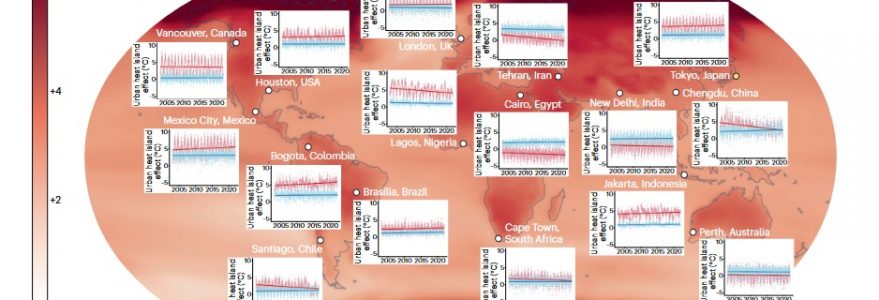Prof. Marta Szulkin from the Faculty of Biology, the University of Warsaw, co-authored an article on the impact of climate change and urbanisation on the state of biodiversity. The conclusions presented by the scientists in “Nature Climate Change” may help to design spaces better adapted to the changing environment in the future.
Until now, the biological effects of climate change and urban development have been studied as separate issues in the scientific world. A team of scientists, including Prof. Marta Szulkin from the UW’s Faculty of Biology, decided to investigate their joint impact on ecological processes and the evolution of species living in urban areas. The findings were published in Nature Climate Change.
One example of the interaction between climate change and urbanisation is its effect on the temperature in cities. Temperature increases resulting from climate change can contribute to faster tree growth in cooler climates and slower tree growth in warmer climates. In such a case, cities with more trees can make better use of the shade they offer, affecting the living conditions of residents and the development of many animal and plant species. The process discussed by the scientists can also be seen in relation to, for example, the flow of rivers or problems of water access and pollution. Another problem raised by the researchers is isolation of some animal species caused by the fragmentation of their habitat and the difficulty of moving to cooler areas (climatic niche tracking).
This issue proves to be an additional burden for animals, such as pumas in California, which, in the absence of urbanisation processes, could more easily follow climate change and move northwards; however, the growth of urban areas is making it very difficult for them to do so.
In order to better understand this phenomenon, scientists have proposed five hypotheses, illustrating possible changes in the evolution of species in urban and natural areas, driven by climate change and urbanisation. They envisage both a greater dominance of urban species and the gradual establishment in cities of plants and animals that have so far not been found there. Verification of the hypotheses is expected to be possible through, for example, constant observation of urban ecosystems and examination of the socio-economic situation of the population in the context of climate change. In the future, this research may help to design green cities resilient to climate change and friendly to all the species that live there.
Publication details
Urban, M.C., Alberti, M., De Meester, L., Yuyu Zhou, Brian C. Verrelli, Szulkin M. et al (2024), Interactions between climate change and urbanization will shape the future of biodiversity, Nature Climate Change: https://doi.org/10.1038/s41558-024-01996-2



